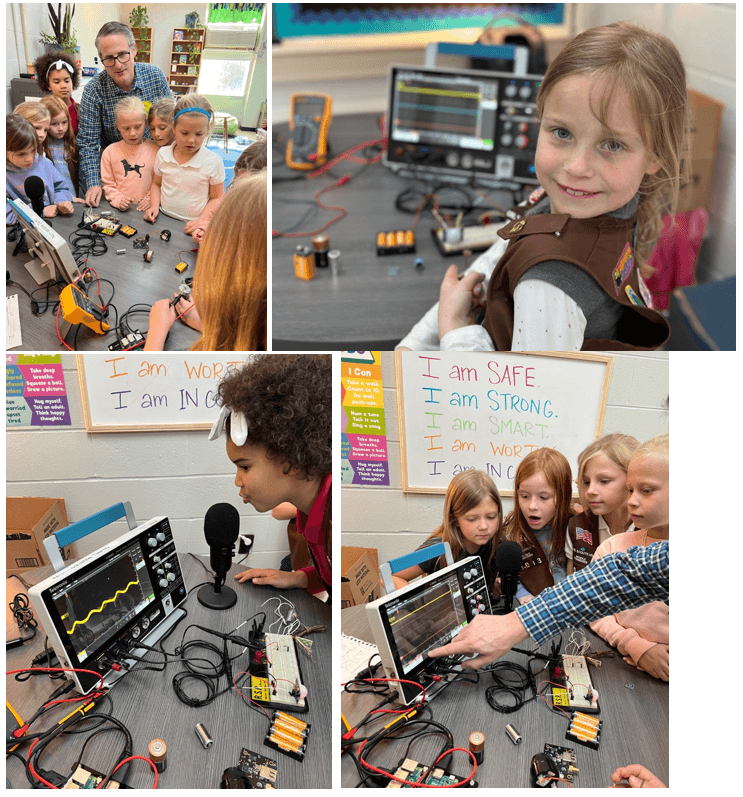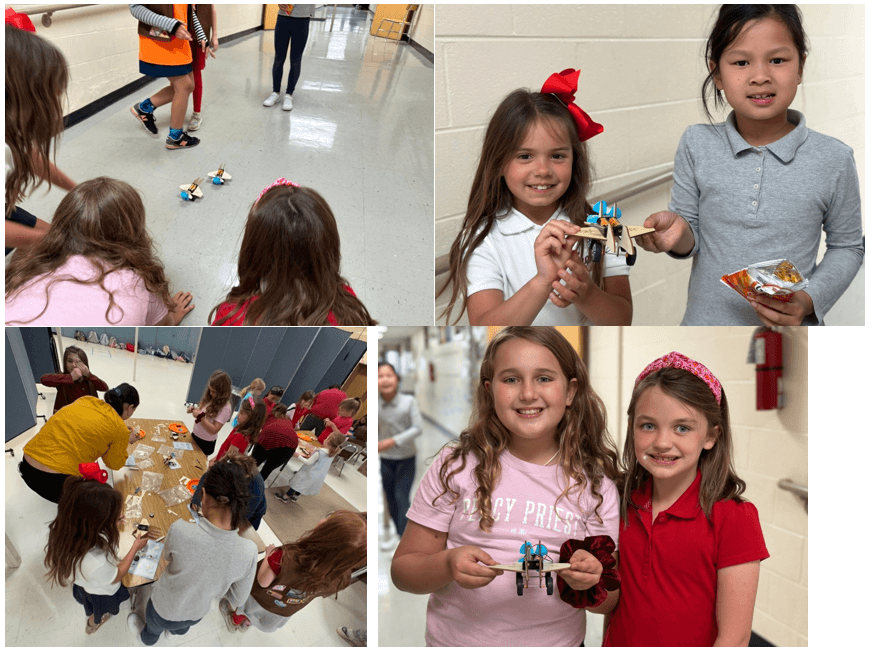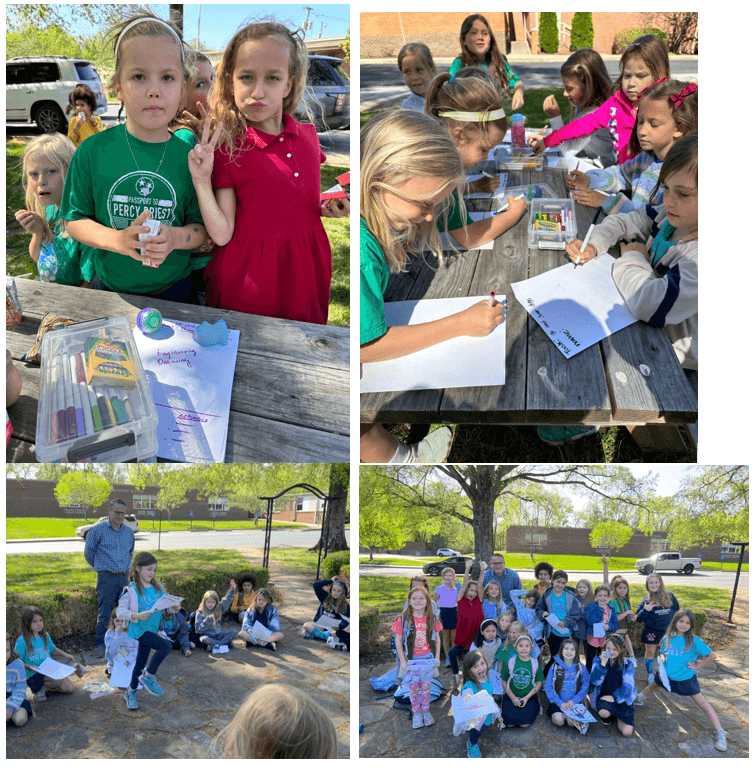

“Getting kids - especially girls - interested in STEM is highly important to me and the engineering community broadly.” Rick Khulman, GM Portfolio Software
Over the last six weeks, I’ve had the pleasure to teach my daughter’s Girl Scout troop about robots with the help of Tektronix and Boston Dynamics. Getting kids - especially girls - interested in STEM is highly important to me and the engineering community broadly. Girl Scout Brownie Troop 1013 is affiliated with Percy Priest Elementary in Nashville TN. My wife, Jamie, co-leads the troop, and it’s made up of 26 second-grade girls. During the sessions, the girls earned three badges: Programming Robots, Designing Robots, and Showcasing Robots.
Is a Washing Machine a Robot?
We started out in front of a chalkboard, with one girl sarcastically remarking, “This feels like school!” But, before we knew it, we were wrestling with life’s most difficult philosophical questions, like “Is a washing machine a robot?” We distilled robots into the simplest terms possible while still teaching real engineering and growing through hands-on experience. We picked four robot concepts that everyone fully understood by the end of the multi-session course: sensors, actuators, computers, and code.
We learned about robots in real life, what makes up a robot, the forms they can take, and why they exist. Robots, after all, are just three critical components: sensors, actuators, and a computer.
- Sensors convert attributes of the physical world into signals a computer can read and work a lot like our own senses. Cameras and light sensors, for example, work like our eyes. There are microphone sensors, that, like our ears, convert sounds into signals.
- Actuators manipulate the environment in some way. Motors help robots move. Assemblies, like arms and grabbers, help robots carry out tasks in the real world.
- A computer is the brain. It runs code taking inputs from sensors and taking action with actuators. The code is written by humans, but it’s written in such a way that the robot can make its own decisions.
To bring it home, we inspected a RoombaTM Robot Vacuum Cleaner and reverse--engineered together the sensors, actuators, and computer code that make it work.
What on Earth is an Oscilloscope?
After “school,” we got hands on with an oscilloscope. Tektronix loaned us a 2 Series Mixed Signal Oscilloscope (2 Series MSO), which was perfect for demonstrating how sensors generate special signals a computer can understand. With a microphone, magnet sensor, and motion sensor all hooked up to the 2 Series MSO, each girl sang a tone into the microphone and tried to achieve the “perfect wave.”
It was difficult for the whole group of wiggly girls to stay perfectly still in front of the motion sensor, but we held our breath and froze to finally get the sensor to “go low.” We made electric motors (i.e., actuators) spin with a battery, and of course, we measured DC voltages of household batteries with a Fluke multimeter.

Let’s Get Coding
How do we teach second graders to code?
Well, we learned a fancy software word, pseudocode, a real process used by software engineers to roughly design the “thinking logic” of a robot. We broke into groups and wrote pseudocode to program “Robot Rick” (aka me) to make a peanut butter sandwich. With all the materials on a desk in front of me, Robot Rick hilariously followed the “code” exactly as written - leading to poking a jar with a knife, placing the entire jar on bread, getting peanut butter all over my face, and trying to use the whole loaf for one sandwich (still in the bag)! We learned that if you want to write code, it must be exact. The computer will only do what you tell it to do - nothing more (or less).
Time to Build Some Robots
Tektronix proudly sponsored robot build day, buying each of the girls their own STEM robot building kit and batteries. We built two-wheeled balance bots and robot planes. Of course, we had to race them!

For designing and showcasing, the girls had to create their own robot design document and present it to the group.
We built a template where each girl had to:
- Name their robot
- Define its task
- Create an engineering drawing
- Label its sensors and actuators
- Write a few lines of pseudocode that show how it would work.
We got several “butler bots” and “homework bots.” Let’s say this - cleaning rooms and doing schoolwork were at the top of the list of outsourceable automation opportunity.

Dancing Dog Robots Can Be Teachers, Too
On our last day, we got to see a real industrial robot in action. Roger Hebert, a friend of mine and Boston Dynamics sales manager, brought over the famous Boston Dynamics Dog named Spot. You have no doubt seen the YouTube videos over the years about this unbelievable robot. We talked about its sensors and actuators, which now include a Fluke acoustic imager by the way. We talked about its intelligence and its applications. For some reason, the girls were not impressed by the dog walking up and down stairs, across uneven ground, and doing complex tasks. They did, however, request to see dance-mode again and again. Thank you to Boston Dynamics and Roger for a truly unique experience for the girls (and their parents).
Thanks again to Tektronix, Boston Dynamics, and all the other folks that helped along the way to get girls excited about robots, engineering, and broadly STEM. After this engaging learning, many of these girls said they wanted to be an engineer when they grow up, and I truly hope that comes true.
An afterthought: Seeing what I’ve seen, I propose Tektronix endeavor to create a device that can store the excess energy of a second-grade Girl Scout. Could we solve global energy demand? … Just asking questions.


